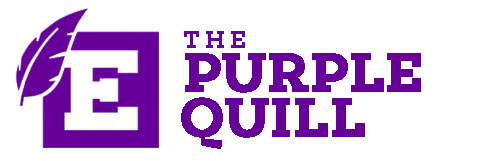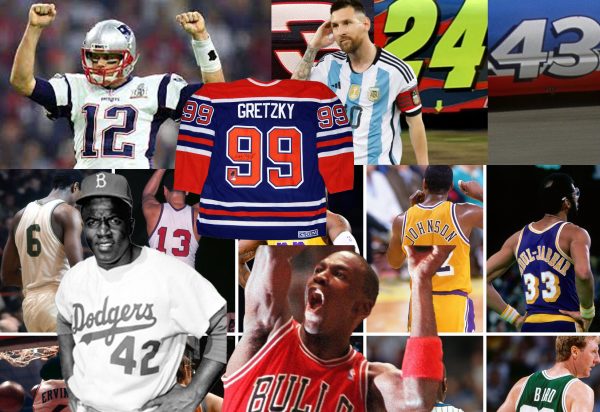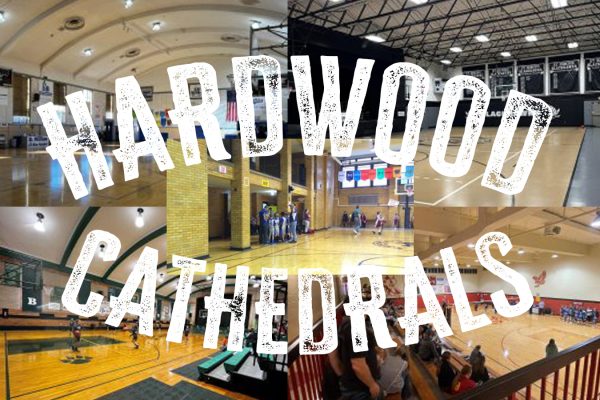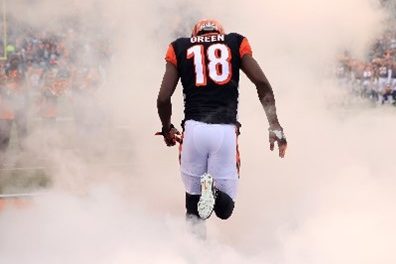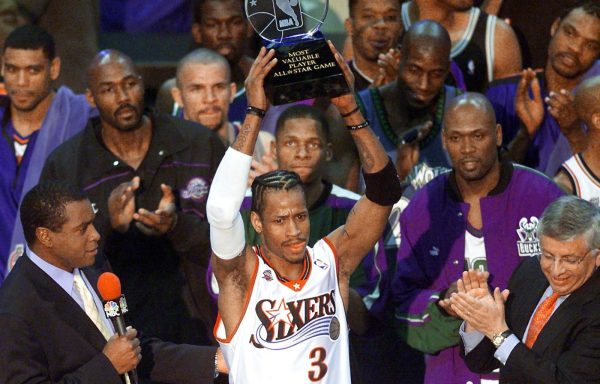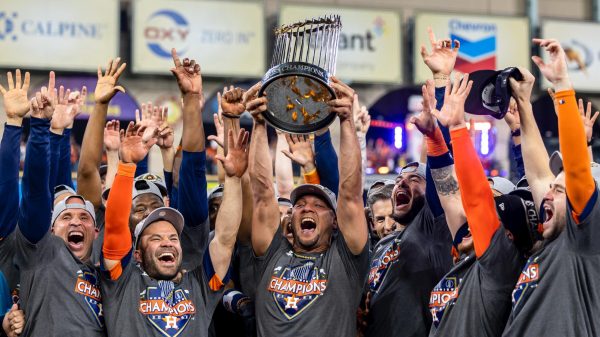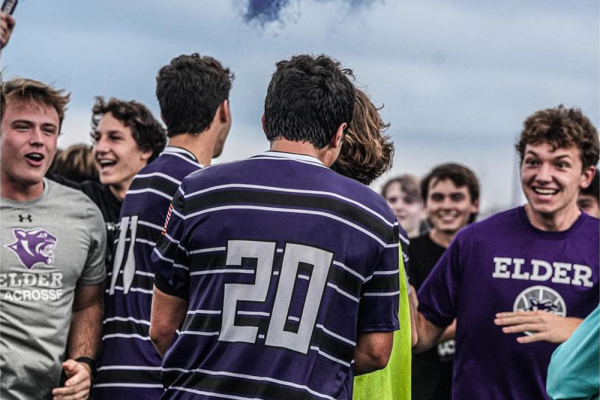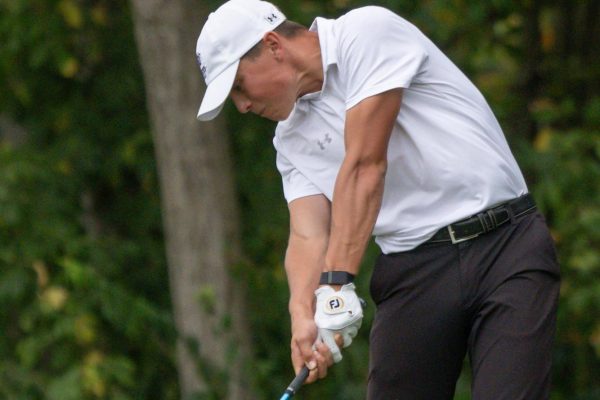No more home plate collisions?
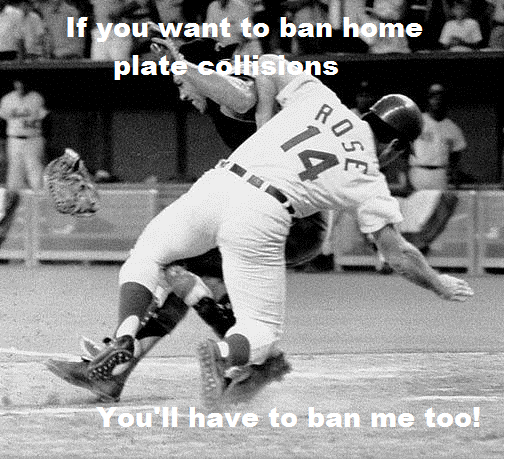
Pete won’t stand for MLB’s new home plate rule
As far as safety rules go, it seems like MLB is going the way of the NFL.
As a sort of experiment for the 2014 season, a new rule has been instituted that will make significant changes to increase player safety during home plate collisions.
Depending on how the 2014 season goes, the rule could become permanent for the 2015 season.
The main highlights of rule 7.13 include:
-A runner may not run out of a direct line to the plate in order to initiate contact with the catcher, or any player, covering the plate. If he does, the umpire can call him out even if the player taking the throw loses possession of the ball.
-The catcher may not block the pathway of a runner attempting to score unless he has possession of the ball. If the catcher blocks the runner before he has the ball, the umpire may call the runner safe.
-All calls will be based on the umpire’s judgment. The umpire will consider such factors as whether the runner made an effort to touch the plate and whether he lowered his shoulder or used his hands, elbows or arms when approaching the catcher.
-Runners are not required to slide, and catchers in possession of the ball are allowed to block the plate. However, runners who do slide and catchers who provide the runner with a lane will never be found in violation of the rule.
-The expanded instant replay rules, which also go into effect this season, will be available to review potential violations of Rule 7.13.
To sum up the important parts, home plate collisions are still legal, but now the runner can’t run out of a direct line to knock over the catcher, and the catcher can’t block the way of the runner unless he has possession of the ball.
As of right now, this is just an experimental rule to help determine if further action should be taken to cut down on home plate collisions, and there will likely be a few tweaks and changes along the way.
When I first heard that there were talks of eliminating the home plate collision, I was completely against it, because it’s something that has always been a classic part of America’s pastime, and it just seemed sort of unnecessary, like the NFL potentially eliminating the extra point. Now that I look deeper into the new rule I think it’s a good idea not only because it does make the game safer, but the catcher shouldn’t be allowed to block the plate anyway if he doesn’t have the ball.
Reds’ catcher Devin Mesoraco is one of many who likes the rule and thinks it will help benefit the game, “I heard they wanted to do more and take away any type of contact at the plate at all. I wasn’t quite in favor of that,” Mesoraco said. “What they have passed now I’m definitely in favor of. I think it makes a lot of sense. It takes away those unnecessary collisions. It’s a play that’s a lot of fun. I think nothing really gets a team going a whole lot more than a play at the plate. I didn’t want them to take away any contact at all.”
San Francisco Giants’ catcher Buster Posey, the 2012 NL MVP, who had his 2011 season cut short due to a horrible collision at home plate, is no shocker to support the new rule. “What I take away from it is that it eliminated malicious collisions, which is a good thing,” Posey said. “My main thing is for everybody to be comfortable with it. Not everybody will be comfortable with something when it’s changed. So my main thing was that catchers and runners were protected.” The way I look at it, I don’t see that drastic of a change,” he added. ”The hardest part will be for umpires to make a judgment, although having the replay might help.”
Other big league catchers, like the Milwaukee Brewers’ Jonathan Lucroy, and the LA Dodgers’ A.J. Ellis, were skeptical about the rule change and weren’t sure if they were on board with it.
“I’m a conservative-type guy. I like keeping things the way they are, although I do understand where they’re coming from,” Lucroy said. “I understand the owners who voted on it want to maintain their investments, and catchers are investments. So are the players who hit catchers.”
“I understand the importance of concussions”, Lucroy continued. “I get it. It’s just really hard to break old habits. Yesterday, we were thoroughly confused, trying to figure out ways to do it. There were so many issues as far as, ‘Will this be legal? Would that be legal? We can practice it. I just want to make sure what we can and can’t do.”
“I understand that they’re trying to make the game safer”, according to Ellis. “I appreciate that Major League Baseball is making an attempt to protect the guys who play my position. It’s a physically-demanding position but something we know when we take on the risk when we put the catcher’s gear on, and it’s part of what we signed up for.
“The one thing I hate about the rule is it takes away the game-changing or game-saving play,” he added. “It’s something we train for, we prepare for, and can be the difference between a win or a loss. It’s similar to robbing a home run or turning a tough double play in the middle. Those are plays that are at risk for injury and I don’t see those plays being taken away.”
Whether you’re for or against the new rule, the fact is that it could spell the end of the home plate collision as we know it. While it ultimately could make the game safer, it changes the game forever by taking away something that has been with it since the very beginning.
All we can hope for is that Pete Rose will have something to say about it when he is allowed back into baseball and finally elected into the Hall of Fame.
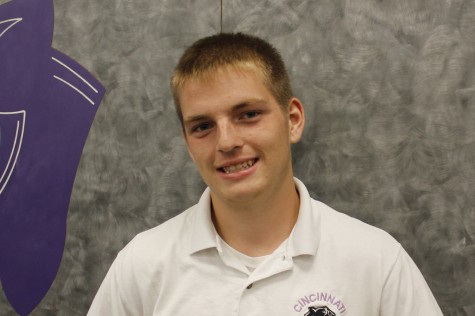
My name is Rob Ellerhorst and I am part of Elder High School's Class of 2015. This year I am one of the co-editors for The Purple Quill after spending...
